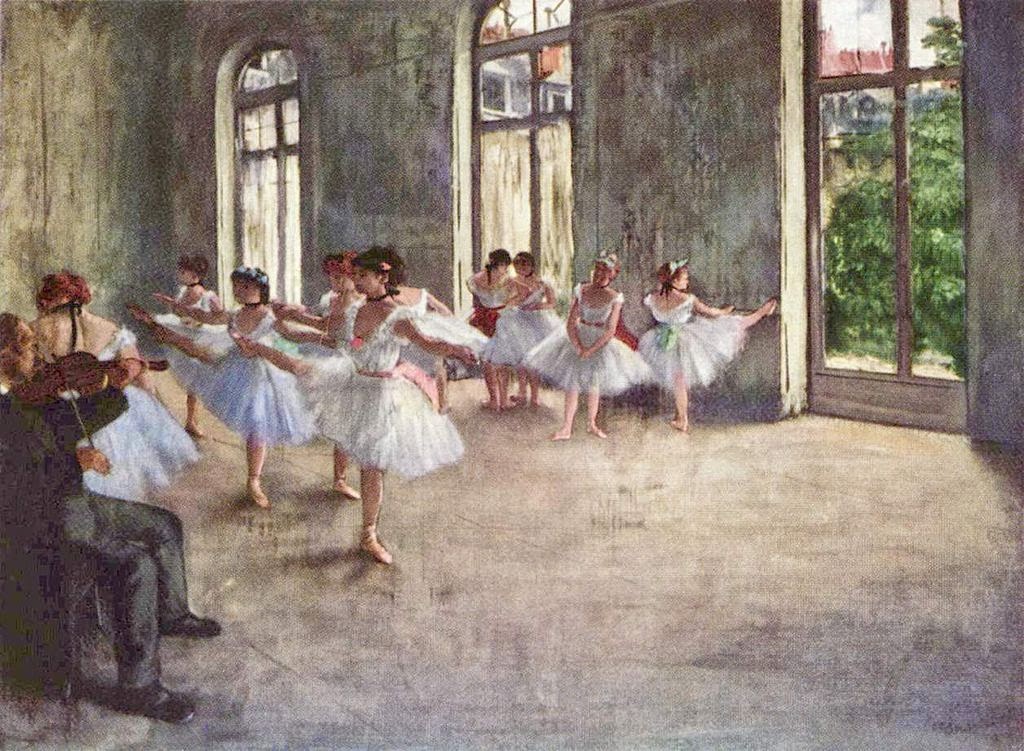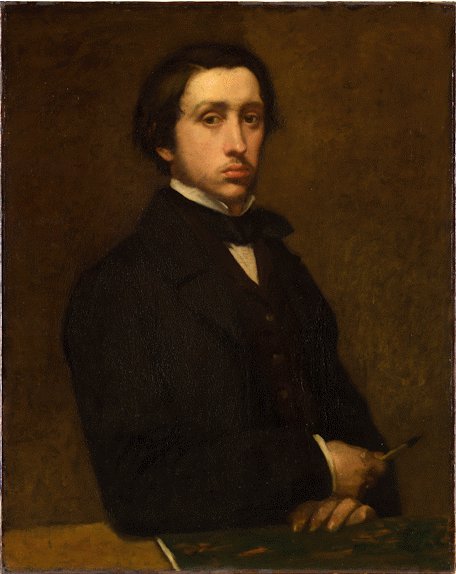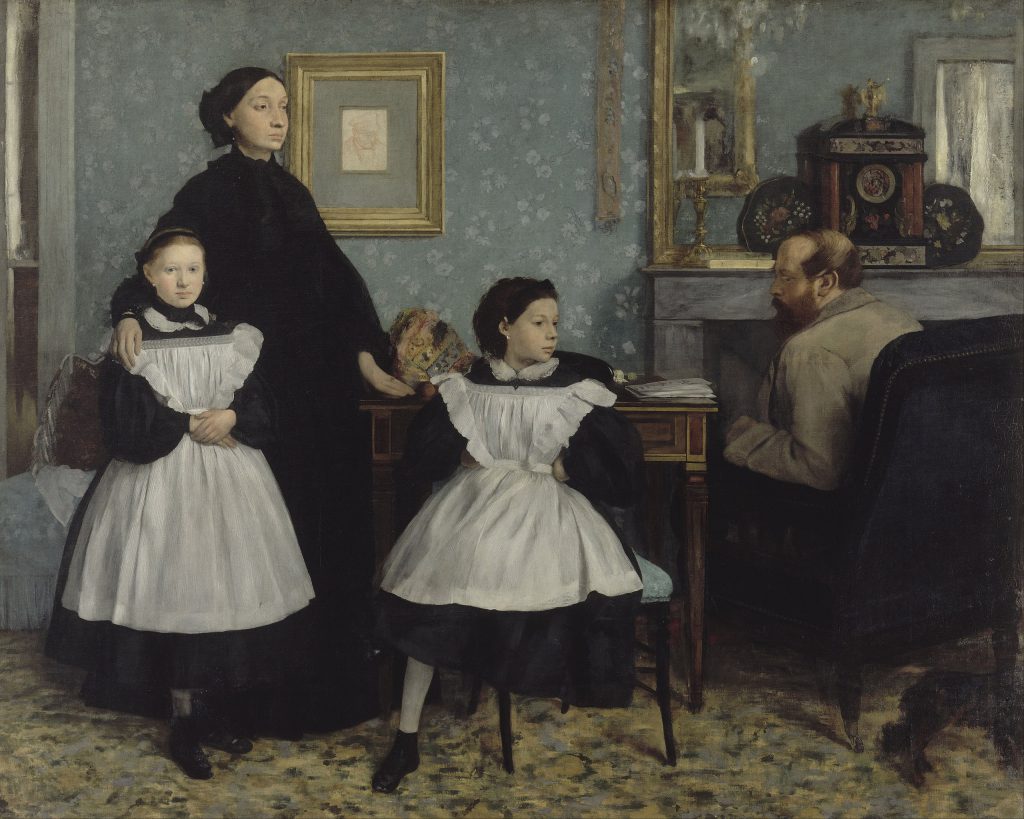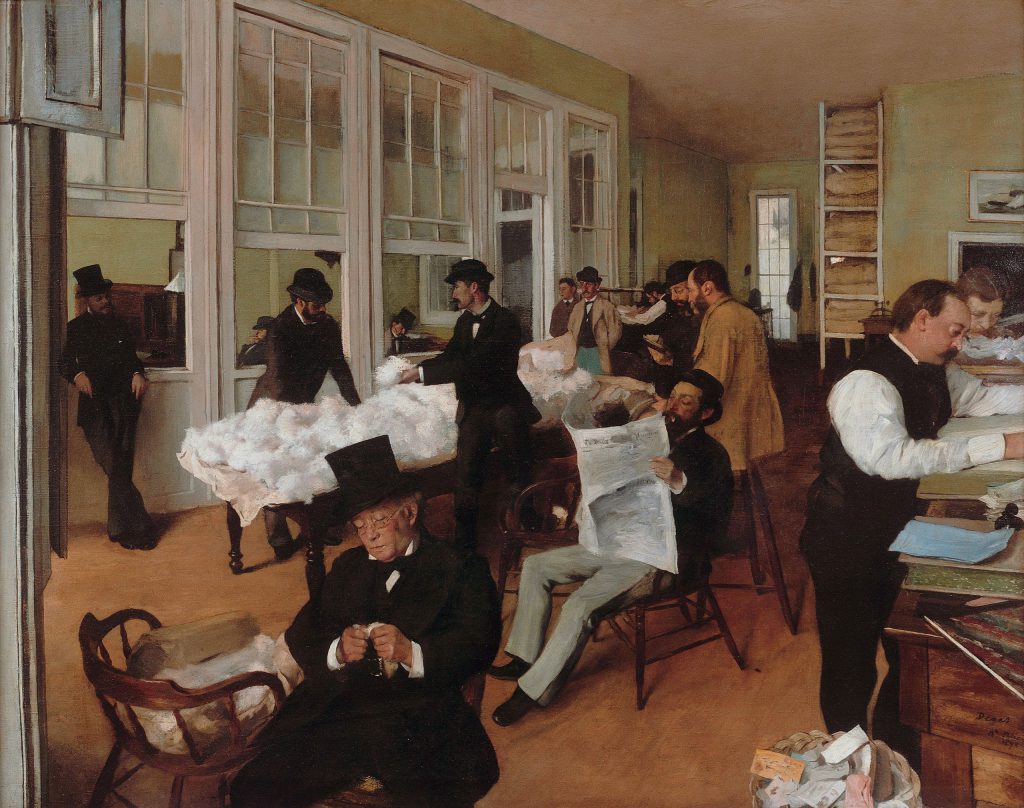
Ballet Class (1873)
by Edgar Degas
On July 19, 1834, French artist Edgar Degas was born, famous for his paintings, sculptures, prints, and drawings. He is especially identified with the subject of dance; more than half of his works depict dancers. He is regarded as one of the founders of Impressionism, although he rejected the term, and preferred to be called a realist.
“An artist is a deception.. ..an artist is only an artist at certain times, by an effort of will.. ..the study of nature is a cliché; isn’t Manet the living proof? For although he prided himself on slavishly copying nature, he was the most inadequate painter in the world, not making a single brushstroke without reference to the old masters; for instance, he refrained from drawing fingernails because Frans Hals did not draw them.”
– Edgar Degas, from his talk with the visiting Mallarmé, 1880’s
Edgar Degas Background
Edgar Degas (for which he would later ‘bourgeois’ his name) was born in Paris, France, the first of five children of Auguste de Gas (c. 1795-1874) and his wife Célestine Musson (1815-1847). The father, a native of Naples, headed the Paris branch of the family bank in Naples. The mother was of Creole descent and came from New Orleans; she died when the son was 13 years old. Degas grew up in an upper middle-class environment open to the arts. After attending the Collège Louis-Le-Grand, he began to study law at his father’s request, but soon gave it up to pursue an artistic career. His father supported him in this, among other things by providing him with a suitable studio. From 1853 Degas took lessons with the Ingres student Louis Lamothe. In 1855 he attended the École des Beaux-Arts for a short time. Afterwards he preferred to continue his artistic education on his own. In the Parisian museums he drew from antique reliefs as well as from the models of old masters.

Edgar Degas (1834-1917) Self Portait
The young artist traveled to Italy in 1856, where he lived with his aunt’s family in Naples. In this period, Degas drew and painted numerous copies of works by Michelangelo, Raphael, Titian, and other Renaissance artists, but he usually selected from an altarpiece a detail that had caught his attention, a secondary figure, or a head which he treated as a portrait. After a three year stay in Italy, Degas moved into a Paris studio to begin painting “The Bellelli Family“, one of his early masterpieces. However, the painting remained unfinished until 1867. The artist created several history paintings, like Young Spartans around 1860 or Scene of War in the Middle Ages, but unfortunately, they received only little attention.

The Bellelli family (1858-1867), oil on canvas, 200 × 250 cm
After the Franco-Prussian War in 1870, Degas stayed in New Orleans, Louisiana, where he created A Cotton Office, the only painting that was purchased by a museum in his lifetime. The father died the next year. It subsequently became apparent that the Paris bank had been kept afloat only by loans and that Degas’ brother René had accumulated large business debts. The bank was liquidated two years later, and Degas felt obliged to pay off the brother’s debts. In return, he had to sell parts of his art collection and restrict his lifestyle. However, his financial situation improved considerably in later years, as his works recorded immense price increases. This was also due to the support of his art dealer Paul Durand-Ruel. Beginning from 1874, the artist depended for the first time in his life on sales of his artwork for income and in this period, he produced probably his greatest works. He joined the group that soon became known as the Impressionists. They were created with the intention of breaking the exhibition monopoly of the established “salon”.[5] Degas participated in all but one of the eight exhibitions held until 1886. He rendered outstanding services to the preparation and organization of these exhibitions, but his uncompromising attitude and lack of understanding for the concerns of the other participants caused many tensions and disputes. However, Degas did not feel that he had much in common with the artists, painting landscapes outdoors such as Monet.[6] Also he disliked being called an impressionist.

The Cotton Office in New Orleans (1873), oil on canvas, 73 × 92 cm
The Dancers
Degas started painting women at work including milliners and laundresses in the late 1860s, shifting from his initial forays into history painting to an original observation of contemporary life. Mlle. Fiocre in the Ballet La Source, exhibited in the Salon of 1868, was his first major work to introduce a subject with which he would become especially identified, dancers. In many subsequent paintings, dancers were shown backstage or in rehearsal, emphasizing their status as professionals doing a job. His interest in portraiture led him to study carefully the ways in which a person’s social stature or form of employment may be revealed by their physiognomy, posture, dress, and other attributes. In his paintings of dancers and laundresses, he reveals their occupations not only by their dress and activities but also by their body type. His ballerinas exhibit an athletic physicality, while his laundresses are heavy and solid.
Photography and Later Life
“Comme nous avons mal fait de nous laisser appeler Impressionistes.”
(What a pity we allowed ourselves to be called Impressionists.)
– Edgar Degas, as quoted in [11]
In his later years, the artist also developed a high interest for photography. He often took pictures of friends, mostly indoors, and other images depicted dancers and nudes. Degas remained unmarried. Nothing is known about relationships with women that gave rise to many rumors among his contemporaries. In his later years, his often brusque and malicious manner, combined with his own sensitivity, caused acquaintances to turn away from him. Degas was a fierce anti-Semite. In the Dreyfus Affair,[4] which polarized the nation from 1894, he took sides against the accused Jewish officer, which cost him many friendships, including those with his painter colleague Camille Pissarro.[7] The events surrounding the affair also led him to break with particularly close friends, a family of Jewish origin. brought his antisemitic leanings to the fore and he broke with all his Jewish friends. The eyesight of the painter diminished more and more over the years. Therefore he was finally forced to stop painting in oil. Around 1908 Degas produced his last pastels and drawings, but continued to work on sculptures for some time. He spent the last years of his life, lonely and almost blind, in the care of a niece. Edgar Degas died of a cerebral hemorrhage on September 27, 1917.
A New Look at Impressionism: Degas and the Medium of Pastel, [10]
References and Further Reading:
- [1] Edgar Degas at Wikiart
- [2] Edgar Degas at Met Museum
- [3] Edgar Degas at the Getty Museum
- [4] J’Accuse – Émile Zola and the Dreyfus Affaire, SciHi Blog
- [5] The Paris Salon des Refusés of 1863, SciHi Blog
- [6] Claude Monet and Impressionism, SciHi Blog
- [7] Camille Pissarro and the Impressionistic Art Movement, SciHi Blog
- [8] Edgar Degas paintings and interactive timeline
- [9] Edgar Degas at Wikidata
- [10] A New Look at Impressionism: Degas and the Medium of Pastel,
- [11] Walter Sickert, ‘Post-Impressionists,’ Fortnightly Review (January 1911), Museum of Fine Arts, Boston @ youtube
- [12] Trachtman, Paul, Degas and His Dancers, Smithsonian Magazine, April 2003
- [13] Kendall, Richard; et al. (1998). Degas and The Little Dancer. Yale University Press. pp. 78–85.
- [14] Benedek, Nelly S. (2004). “Degas’s Artistic Style”. Metropolitan Museum of Art.
- [15] Timeline of Edgar Degas via Wikidata





